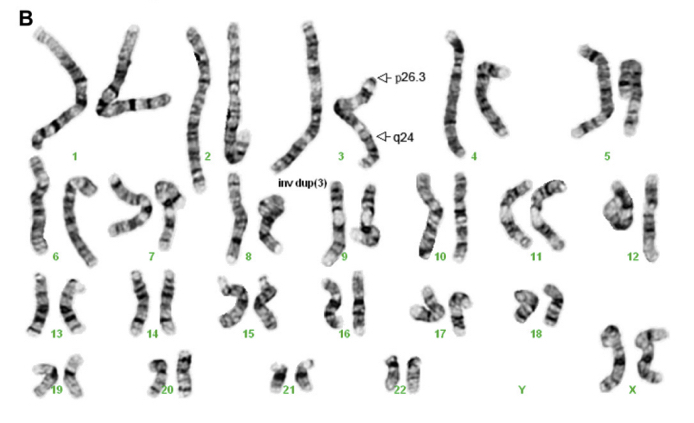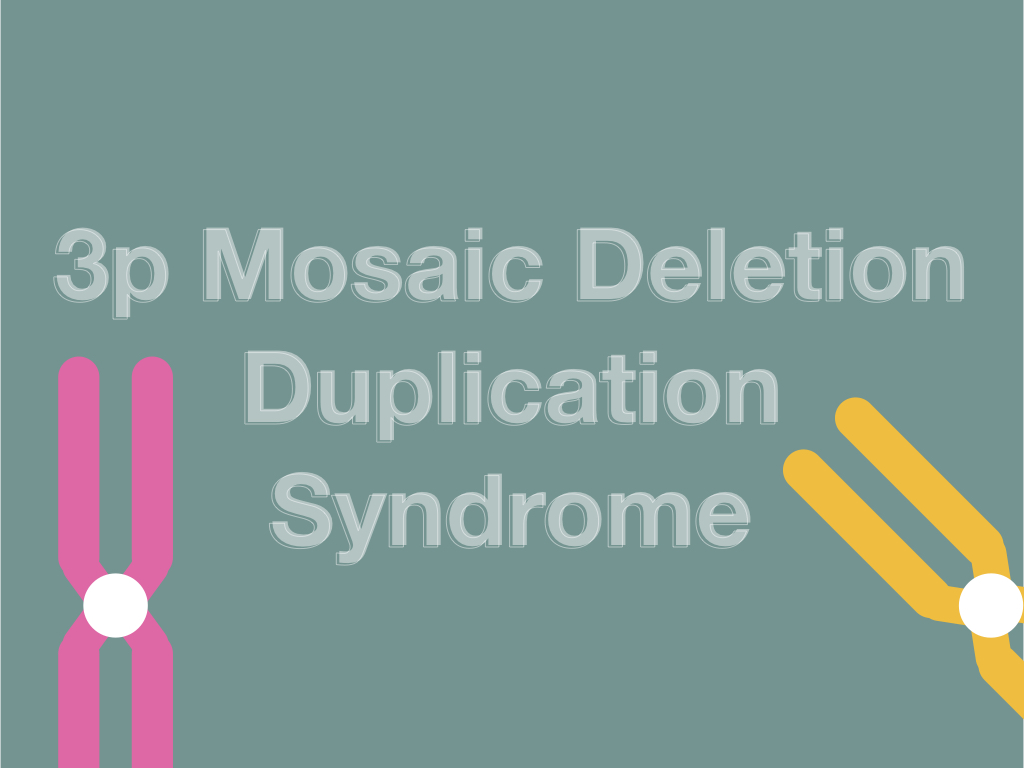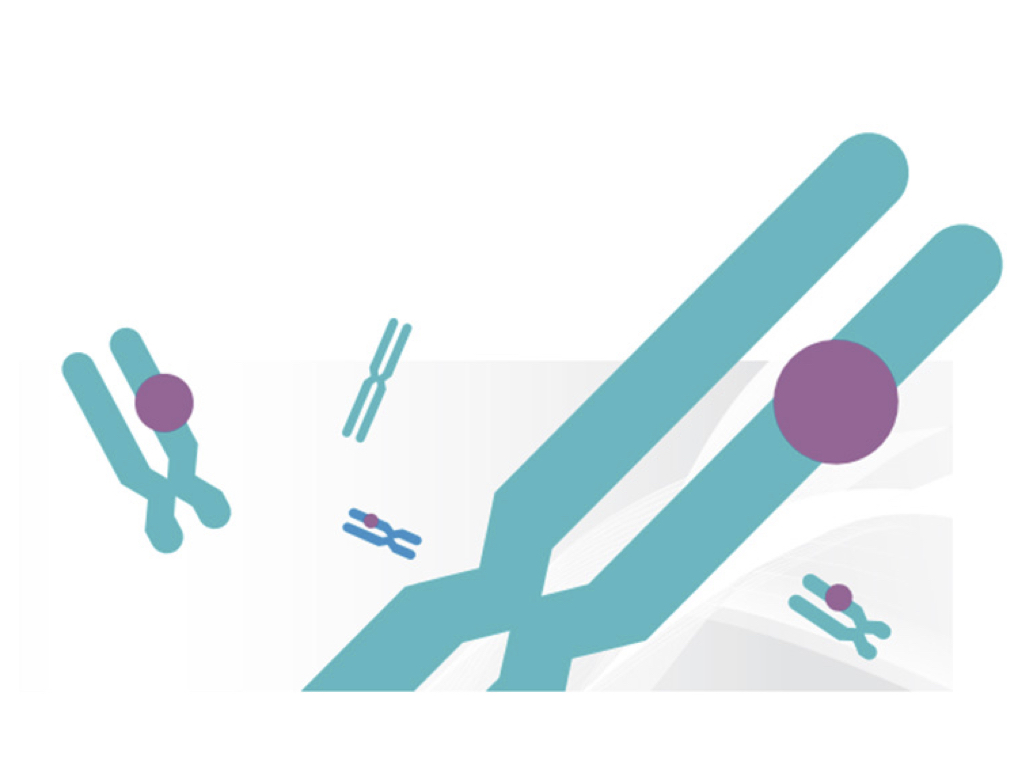“3p mosaic deletion duplication syndrome is one of the rarest genetic/chromosomal conditions that involve both deletion and duplication of chromosome 3, which is congenital.”
Deletion and duplication are the types of chromosomal aberrations. Deletion is when some portion of a chromosome gets removed from the chromosome. While duplication is when some portion gets copied or duplicated.
This literally means, deletion and duplication cause loss and gain of genetic material, respectively. This consequence into serious health problems, mostly are congenital- occur by birth.
Both deletions and duplications are commonly observed, individually in many conditions but aren’t appear in pairs.
When both appear together, the condition is known as a ‘mosaic’ which is again the rarest case scenario. Here in the present article, I will explain the rarest mosaic syndrome- 3p mosaic deletion duplication syndrome, genetic background, cause, symptoms and case studies.
Read further: What is Chromosomal Translocation?- Definition, Mechanism and Types.
What is 3p mosaic deletion duplication syndrome?
The present conditions include partial 3p deletion and partial 3q duplication on chromosome 3 at the same time.
Chromosome 3 is a submetacentric chromosome, appears in a pair having 200Mb DNA which consists of around 6.5% portion of total genomic content. The present chromosome is the largest chromosome in our genome.
The first case of 3p deletion duplication syndrome was first published by Prabhakara et al.
Mechanism:
Mosaic conditions like this are observed in only a few cases worldwide, a clear reason for the occurrence is still not clear. It is believed that 3p deletion and duplication occur by the familial pericentric inversion.
Inversion is when some portion of a chromosome is deleted and attached back in an inverted position to the same chromosome. When inversion includes the centromere, is known as pericentric inversion.
The present case of mosaicism is a type of pericentric inversion. Here the p arm of the chromosome arm gets deleted (del(3)(pter→p25)) and the q arm gets duplication (dup(3)(q21→qter). See the image below,

Noteworthy, Prabhakaran reported the condition dup(3)(q21→qter) and del(3)(pter→p26.1). He also described that the condition resulted due to pericentric inversion.
Contrary, the study of Steinbach et al shows that the deletion duplication of chromosome 3 occurs due to meiotic recombination, a post-zygotic mitotic event, confirmed by Chen P et al.
Conclusively events of pericentric inversion, meiotic recombination and post-zygotic mitotic changes may cause deletion duplication of chromosome 3. Although the clear role of any event is still not studied in the present condition.
Note that all three events occur randomly during the cell division.
Symptoms of 3p deletion duplication :
No distinct features are observed in the present condition, however, some of the common features shown in the newborn are;
- Deformities of hands and defective fingers- clinodactyly.
- Low-set ears, triangular face shape,
- Hypertelorism
- Long philtrum,
- depressed nasal bridge
- Anteverted nostrils
- Low birth weight
The symptoms of only chromosome 3p deletion condition are;
- Slow growth rate,
- Droopy eyelids- ptosis
- Widely spaced eyes,
- small head
- Small jaw and abnormal ears and nose
The symptoms of only chromosome 3p duplication condition are;
- Slow growth rate and developmental delay
- Short stature
- Small head
- Cleft palate and lip
- Poor muscle tone
- Intellectual disability and behavioral problems
- Gastrointestinal problems.
The case Prabakara reported was performed using the conventional fetal karyotyping technique using amniocentesis technique. However, other scientists have used techniques FISH and DNA microarray to rule out the investigations more correctly.
The FISH helped in finding the mosaicism between cultured and non-cultured amniocytes while the array CGH or microarray helped to encountered deletion duplication at chromosome 3.
It shows that the deleted portion at the pter is of 0.15Mb at 3p26.3 and the duplicated portion at qter is 49.42Mb at 3q24 to 3q29.
Note that different scientists have reported varied deletion duplication syndrome at chromosome 3 and so sign and symptoms of the conditions may vary slightly.
Fetal karyotyping- a prenatal genetic testing method is the commonest testing method that rules outs various genetic conditions. Moreover, FISH and array- CGH like more powerful techniques even makes it easy to cover more aberrations precisely than fetal karyotyping.
Babies with such conditions can’t survive longer or may suffer life long, less cure and management options are available for genetic disorders henceforth parents too have to suffer economically, emotionally and socially.
Prenatal testing using karyotyping, FISH or microarray encounter most of those genetic disorders, also avail options to parents on whether to go ahead with the pregnancy or not.
Common deletion duplications point at chromosome 3:
| Sr no | Cytological indication | Reference |
| 1 | del(3)(pterp→26.1); dup(3)(q21→qter) | Prabhakar et al |
| 2 | del(3)(pter→p26.3); dup(3)(q24-29→qter) | Chen P et al |
Conclusion:
To date, less published data are available reporting the present condition and so conclusive evidence and clarity are less too. Although chromosome mosaic deletion duplication syndrome is a combination of chromosome 3 deletion and duplication, phenotype shows wide variations.
The life expectancy of the child with the present condition may also be too short, also have different degrees of metabolic and other problems and aren’t studied yet.
Sources:
Prabhakara K, Bruno DL, Padman P, Prasad S, Sudheer Kumar R, et al. Prenatal detection of deletion-duplication of chromosome 3 arising from meiotic recombination of a familial pericentric inversion. Prenat Diagn. 2008;28:466e8.
Chen P et al., 2011. Chromosome deletion duplication syndrome of chromosome 3: Prenatal molecular cytogenetic diagnosis using cultured and uncultured amniocytes and association with fetoplacental discrepancy. Taiwanese Journal of Obstetrics and Gynecology 50: 485-491.


